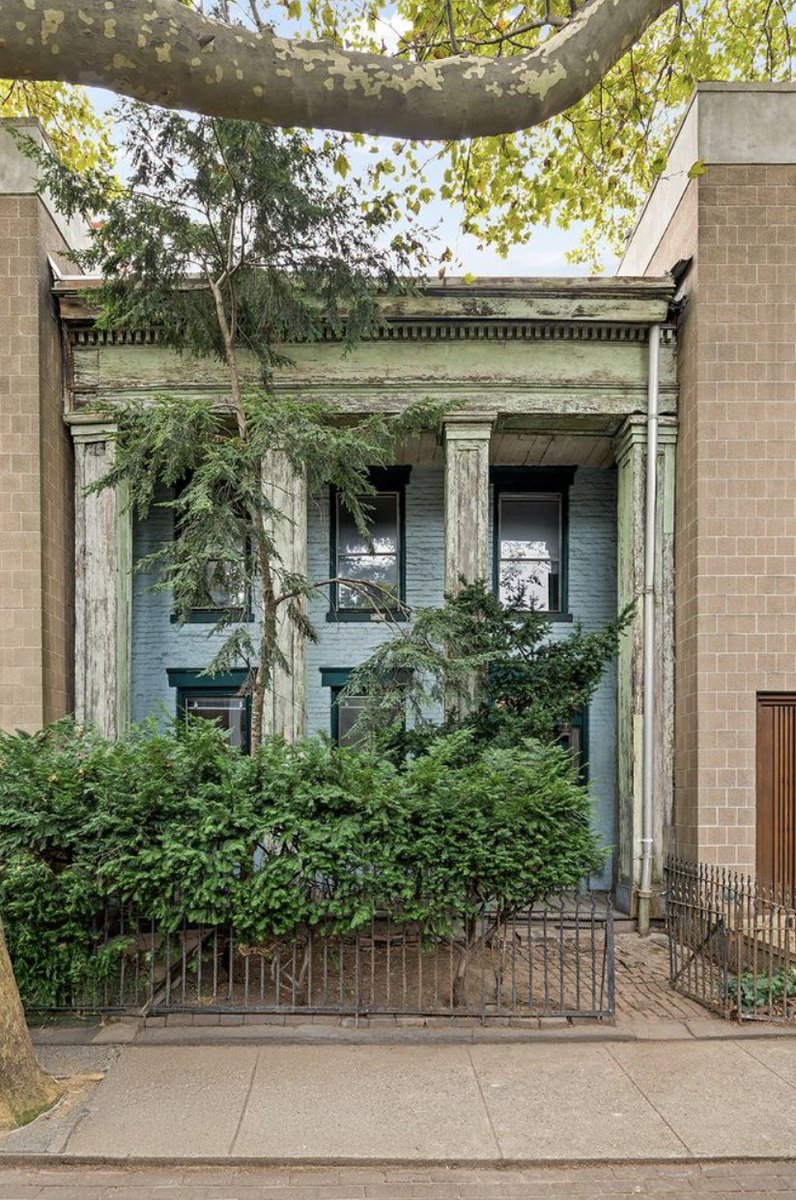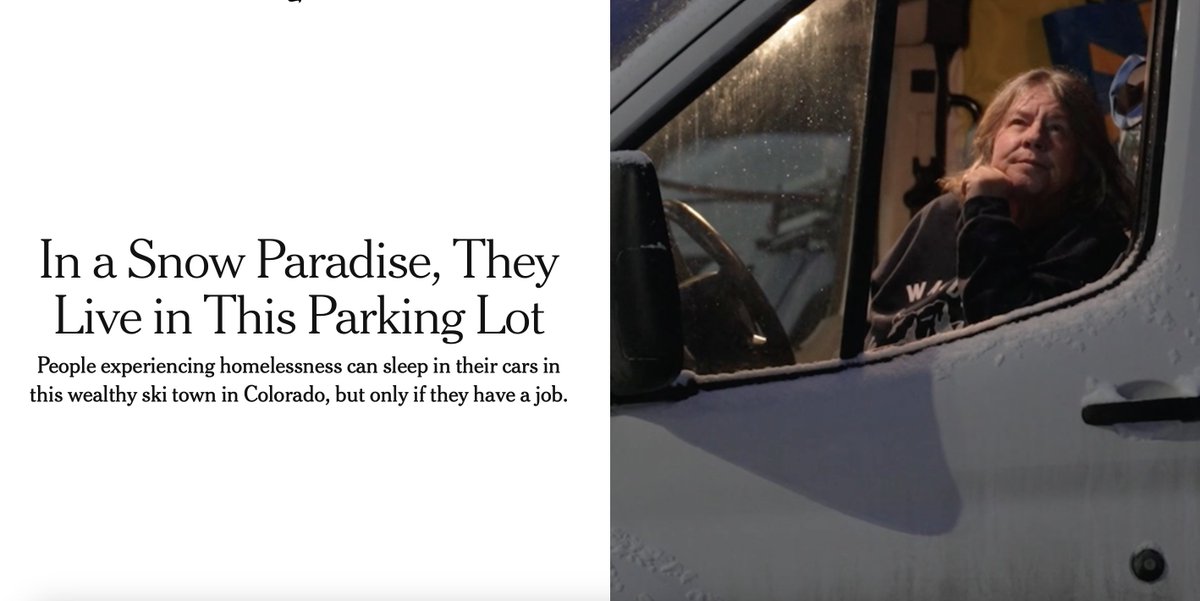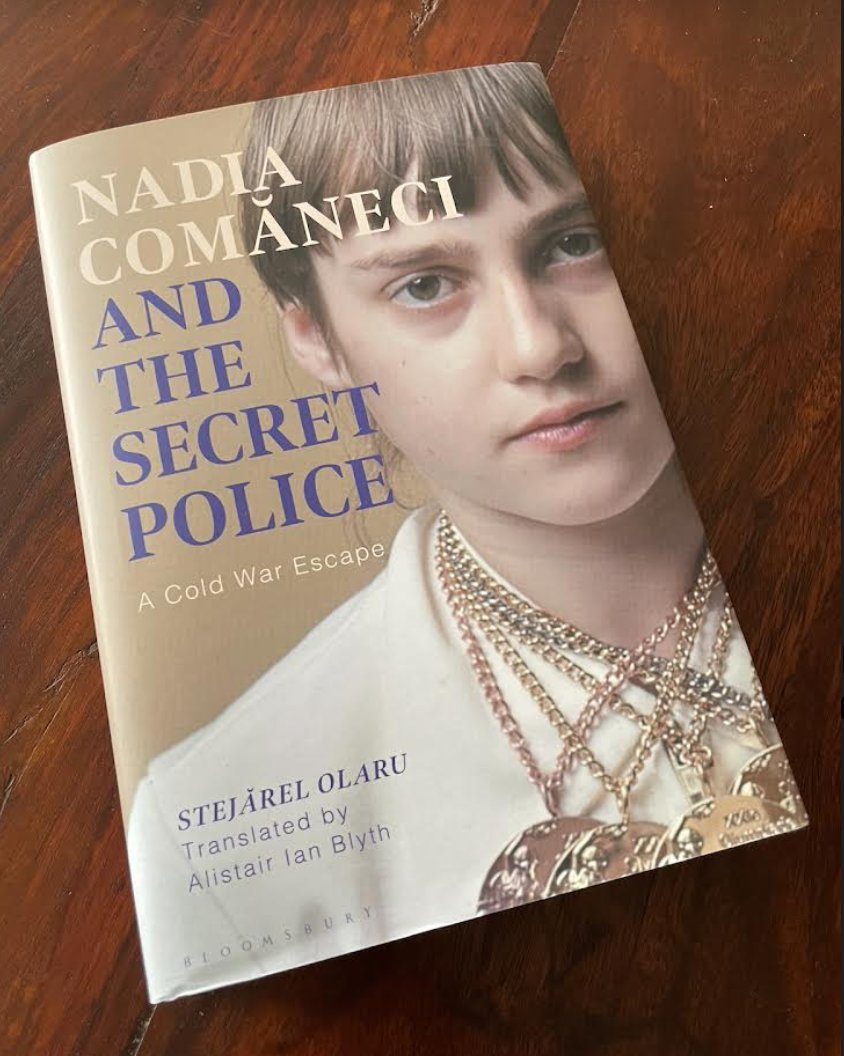1. The discovery of ~1,000 graves at schools for indigenous children in Canada has cast a spotlight on a dark past. But long before those discoveries, Native American activists have been asking the US to provide an accounting of how many children died on this side of the border: 

2. Along with Navajo photographer @Schischillyy, I set out to Colorado to one campus, Fort Lewis College, which was built on the bones of a former boarding school known as the Fort Lewis Indian School and which has been wrestling with its complicated past since 2019: 

3. For decades, the university has provided a tuition waiver to Native American students as a kind of reparation. But it wasn't until two years ago, when a Native American professor @theoreticalfun rode her bike past these panels that the college began its own, full-on reckoning: 

4. @theoreticafun, an assistant professor of biochemistry who is herself Navajo, noticed that the panels inside the campus' clocktower showed pictures of native children forced to wear Western clothes. None of them were smiling. Yet the historical panels described them as "happy"
5. Her email to newly-appointed college president @TomStritikus led to a campus-wide truth-and-reconciliation effort, as professors and students began digging through the archive to understand what happened at the former boarding school which closed in 1910.
6. I spent days poring over the archive and its clear that children died in this boarding school, as they did in the dozens of others that the federal government ran since the 1800s for the purpose of assimilating Native Americans: 

7. Federal agents trawled reservations like those of the Southern Utes pressuring families to enroll their children. But families didn't want to part with their children. In this report, even the agent seems sympathetic pointing out how many Ute children had died at such schools: 

8. Federal agents were authorized to withhold food rations, essentially starving families who refused to send their kids. See this message from the Ft Lewis superintendent, demanding parents seek a voucher from a white person to be able to take their child home for the summer: 
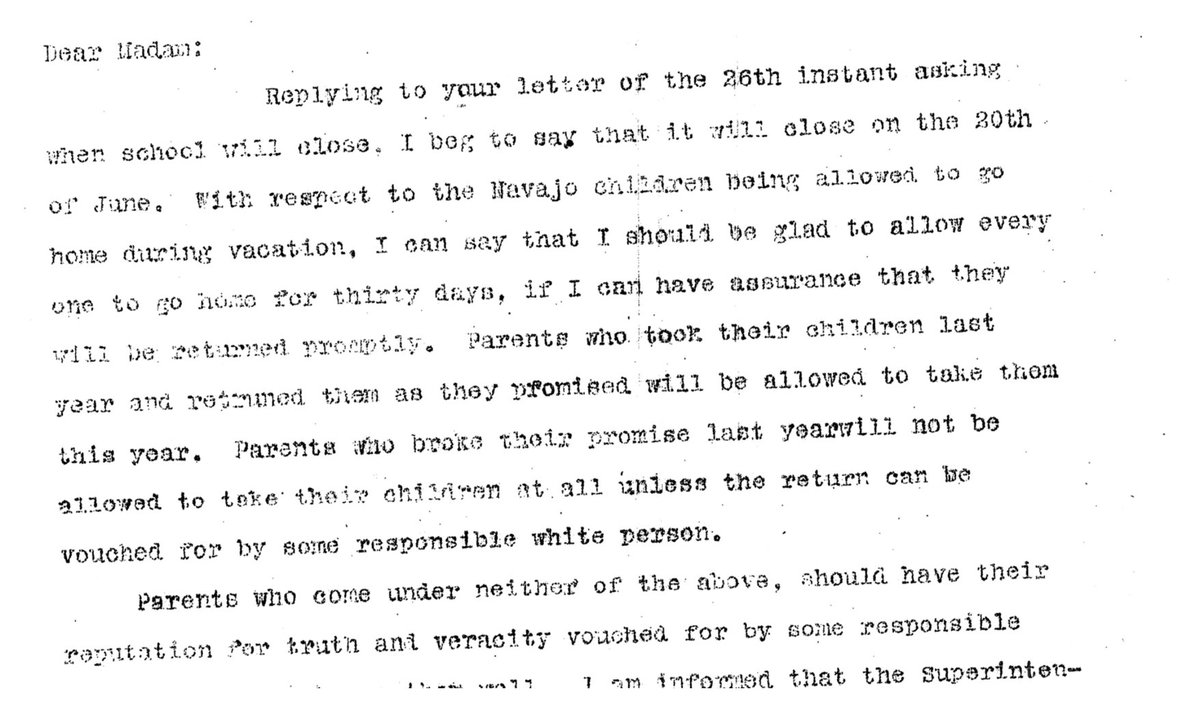
9. Beyond the fact that children died, campuses like Fort Lewis are wrestling with the impact these schools had on those who survived. We spoke to five survivors and 19 children of survivors of the federal boarding schools to learn about the generational trauma they inflicted: 

10. Children who attended these federal boarding schools were beaten if they spoke their own language, and several reprimanded if they were caught practicing any element of their spirituality - from drumming, to singing. They inculcated shame about their Native American origin. 
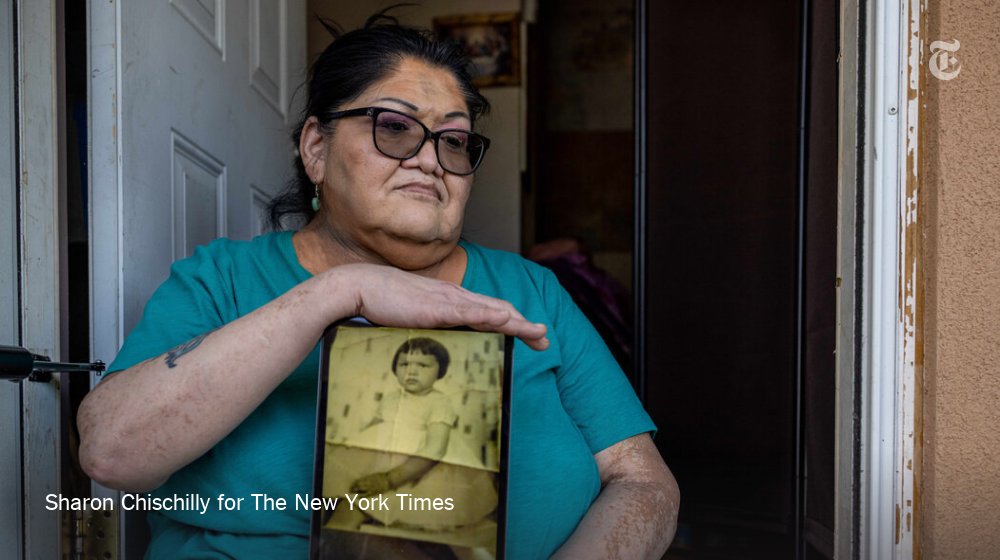
11. The statistics of just one tribe are damning: In the 1800s, federal agents complained that almost no adults on the Southern Ute reservation in southwestern Colorado spoke English. Today, only around 30 people, less than 2% of a tribe of around 1,500, still speak the Ute. 

12. The survivors we spoke to described how it took them decades before they dared speak their language again. Among them is Bessie Smith, a Navajo elder, who spoke of how she learned to perform a Navajo ritual inside her heart, the only place that the school couldn't police: 

13. To read more and to see @Schischillyy's incredible photos, please see our story: nytimes.com/2021/07/19/us/…
• • •
Missing some Tweet in this thread? You can try to
force a refresh



